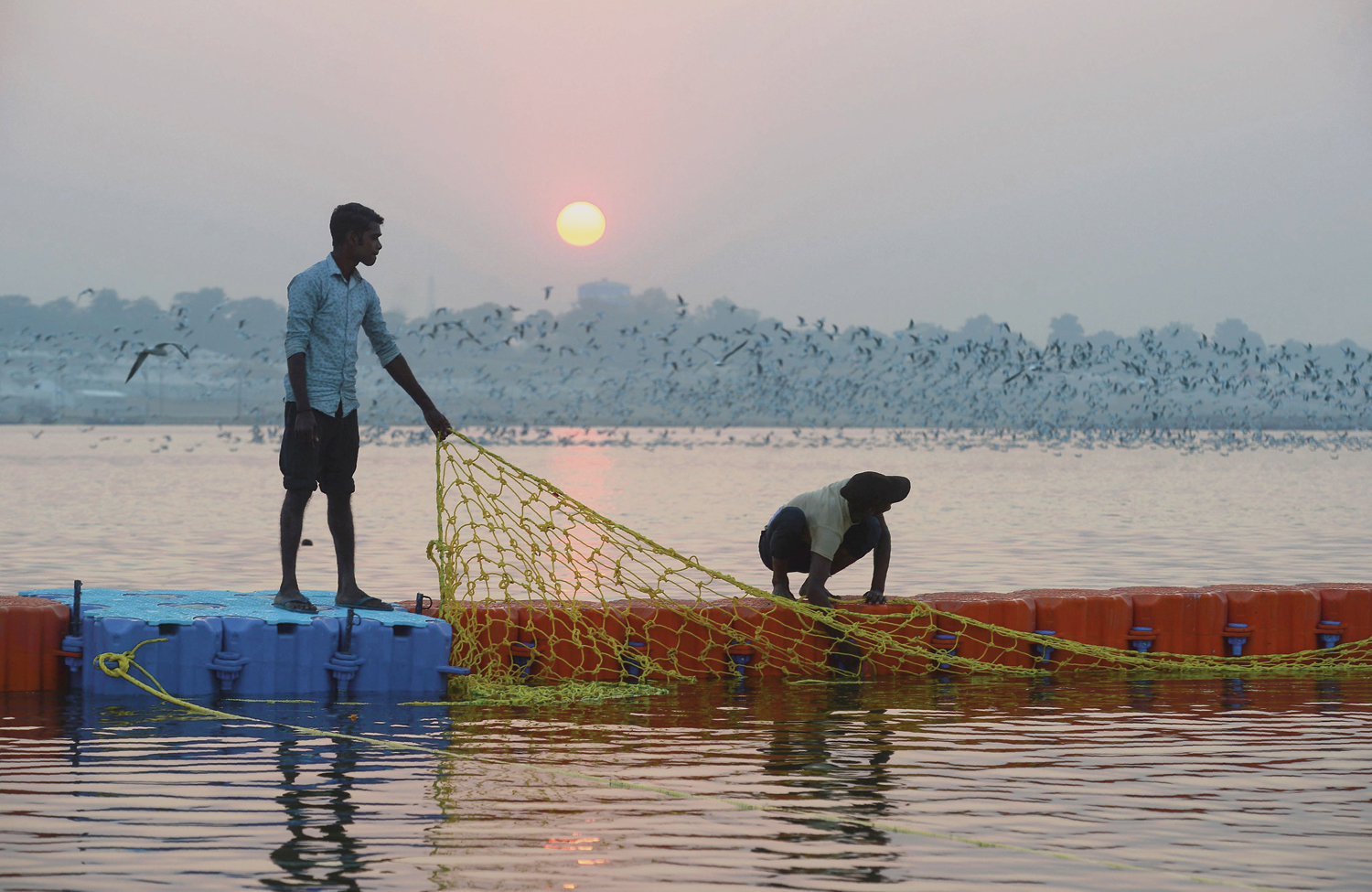

Spirituality, politics and tourism: welcome to the Kumbh Mela, the world’s largest gathering of humanity, that begins next month in India.
During the Kumbh Mela, to be held in Prayagraj in Uttar Pradesh, millions of pilgrims, ash-smeared ascetics, will bathe at the confluence of the Ganges, the Yamuna, and a mythical third river, the Saraswati. Devout Hindus believe that bathing in the waters of the Ganges absolves people of sins and bathing at the time of the Kumbh brings salvation from the cycle of life and death.
The government says about 100 million to 150 million people, including one million foreign tourists, are expected to attend over the eight-week festival period beginning on January 15, and the scale of the efforts to feed and house the pilgrims is immense.
Organisers are erecting temporary bridges, 600 mass kitchens, more than 100,000 portable toilets, and vast tents, each sleeping thousands of pilgrims at a time, in a pop-up city on the banks of the two rivers.
And yet, based on tradition, there shouldn’t be quite such a giant event next year — which is where politics and tourism promotion comes in.
The Kumbh Mela is traditionally held every three years in one of four cities along India’s sacred rivers, with one of the largest of those in Prayagraj. The next Kumbh Mela, meaning “festival of the pot”, was due to be held in the city in 2025.
But with a general election due by May in which the ruling Hindu nationalist Bharatiya Janata Party (BJP) faces a tough contest, the northern state of Uttar Pradesh has transformed a smaller Ardh, or “half” Kumbh Mela, into a full version of the festival.
And this “half Kumbh” may by some measures end up being one of the biggest Kumbhs yet because of the state’s massive promotional efforts, especially as Prayagraj — which until recently was known as Allahabad — is seen as the holiest of the four sites.
PLACE OF SACRIFICE
It was Adityanath who in October renamed Allahabad, a city of six million where there are nearly 800,000 Muslims, as Prayagraj, from its ancient name of Prayag meaning “place of sacrifice” in Sanskrit.
Allahabad is a Muslim name given to the city by a Mughal emperor in 1575.
Neither side is expecting tensions to lead to violence during the festival, although a stampede at the last Kumbh Mela held in Allahabad in 2013, as it was then known, killed 42.
“Muslims have always respected the Kumbh. We will not challenge it in public,” Jilani said.
Officials do not expect clashes either, but have boosted the number of police on duty compared with previous events.
“People who are not involved will not come,” said a state official involved in the preparations. “This is not a problem for us.”
But he added: “To ensure security and safety, there will be five times the number of police officers compared to the previous Kumbh.”
Officials say the festival won’t be a “half” event by any means.
“This is the way we are taking it forward. There is nothing which is half,” said Awanish Kumar Awasthi, a senior official in charge of tourism in the Uttar Pradesh government.
The state government has promoted the Kumbh Mela at several tourism expositions in Europe, and has invited representatives of every country in the world to attend. Last Saturday, foreign diplomats visited Prayagraj to witness the set-up.
The festival has its roots in a Hindu tradition that says the god Vishnu wrested a golden pot containing the nectar of immortality from demons. In a 12-day fight for possession, four drops fell to earth, in the cities of Prayagraj, Haridwar, Ujjain and Nasik, who share the Kumbhs as a result. — Reuters
Alasdair Pal
Oman Observer is now on the WhatsApp channel. Click here



